|
- El-Kab. Rock-cut tombs of Nekheb -
The Tomb of Renini

Renini (or Renni) was the High Priest and Nomarch of Nekhen during the reign of Amenhotep I (XVIII Dynasty). His tomb, known under the catalog number EK-7, is carved in a sandstone cliff in the north-west of the ancient city of Nekheb - the capital of the III Nome of the Upper Egypt.
 The beginning of the research of the rock-cut necropolis of Nekheb, including the tomb of Renini, goes back to the time of the French expedition of Napoleon (1798-1801), as evidenced by the drawing of the fragment of the eastern wall of the tomb in his "Description de l'Égypte." 1812, Vol. 1, Pl. 70, where a funeral procession of Renini is depicted.
The beginning of the research of the rock-cut necropolis of Nekheb, including the tomb of Renini, goes back to the time of the French expedition of Napoleon (1798-1801), as evidenced by the drawing of the fragment of the eastern wall of the tomb in his "Description de l'Égypte." 1812, Vol. 1, Pl. 70, where a funeral procession of Renini is depicted.

Source:
Napoleon Bonaparte. "Description de l'Égypte". 1812, Vol.1, Pl. 70
The plan of the tomb is very simple: an arched corridor forms a kind of a tunnel, leading to the wall with a niche in it. Below is a scheme of the tomb, taken from Joseph Tylor's book "Wall drawings and monuments of El Kab". The total length of the tomb together with the niche makes 11.3 m, and 9.1 m without a niche; width of the tomb is 3.4 m, and height 3 m. At the end of the corridor, in the east wall, once, there was an opening (now blocked), which led to a small room with an area of about 3 sq.m, with a burial pit in it's floor.

Author: Tylor, J. J. Year: 1900 Source: Wall drawings and monuments of El Kab. The tomb of Renini.
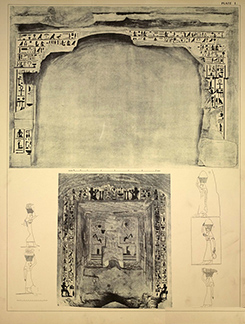 |
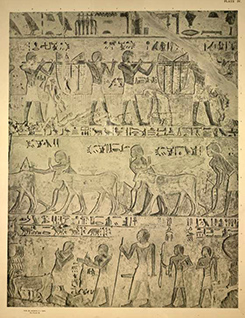 |
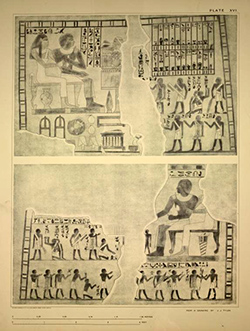 |
The entrance.
The back wall and entrance to the shrine. |
The harvest scene: corn carriers, the ploughmen, etc.; renini and his scribe Zehuti (on the bottom register) |
renini and his mother Aahmes, justified before Osiris seated on a long couch formed of some inlaid wood. |
Despite the simplicity of the architectural design, the tomb of Renini represents a great interest, as it is one of the rare examples of ancient Egyptian tombs dating back to the reign of Amenhotep I, who went with military campaign to Nubia for the expansion of Egypt's borders. As a result of this campaign, the Nubian regions were annexed to the southern Nomes of the Upper Egypt. The capital of the established region was the city of Nekhen (Greek Hierakonpolus, modern Kom el-Ahmar), located opposite to Nekheb ( modern El-Kab).
The King's name of Amenhotep I (Djeser-Ka-Ra) is written in a cartouche above the niche with a shrine on the northern wall of the tomb of Renini.
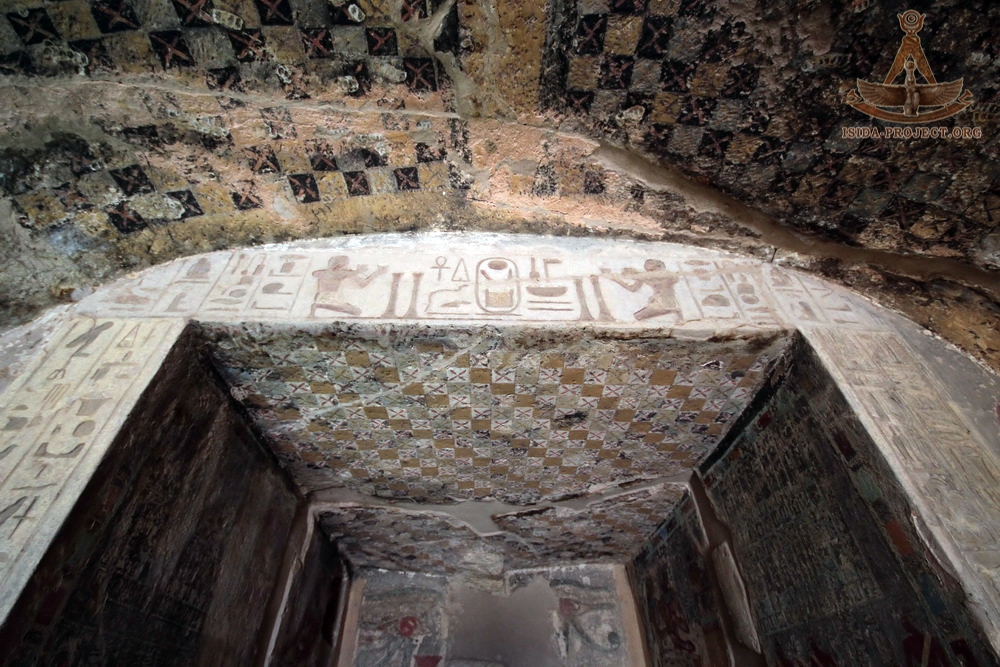
Among the drawings and inscriptions of the tomb one can read the names of the children of the deceased, of his parents, grandparents and relatives. Despite the fact that the inscriptions and drawings are poorly preserved, it is still possible to guess the fragments of chariots and horses, funeral ritual, transportation of the sarcophagus and the procession of mourners.
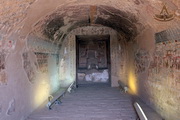 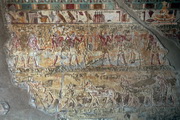 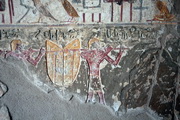 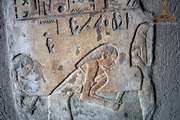
  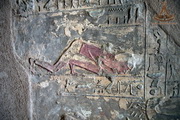 
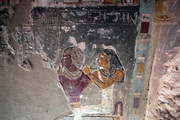  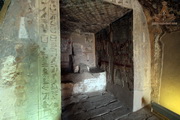 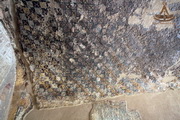
 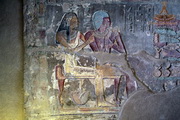 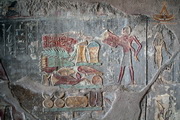 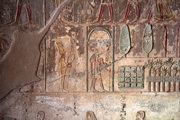
 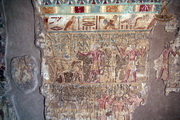 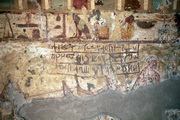 
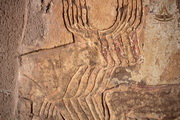 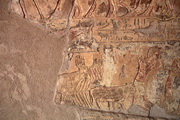  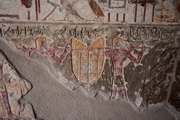
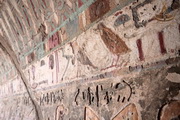 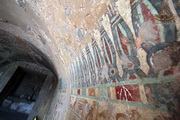  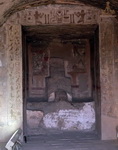
SOURCES:


<< Back to the rock-cut tombs of Nekheb
Discuss on Forum >>
© Copyright 2018 of ISIDA Project. All rights reserved.
|
|

































